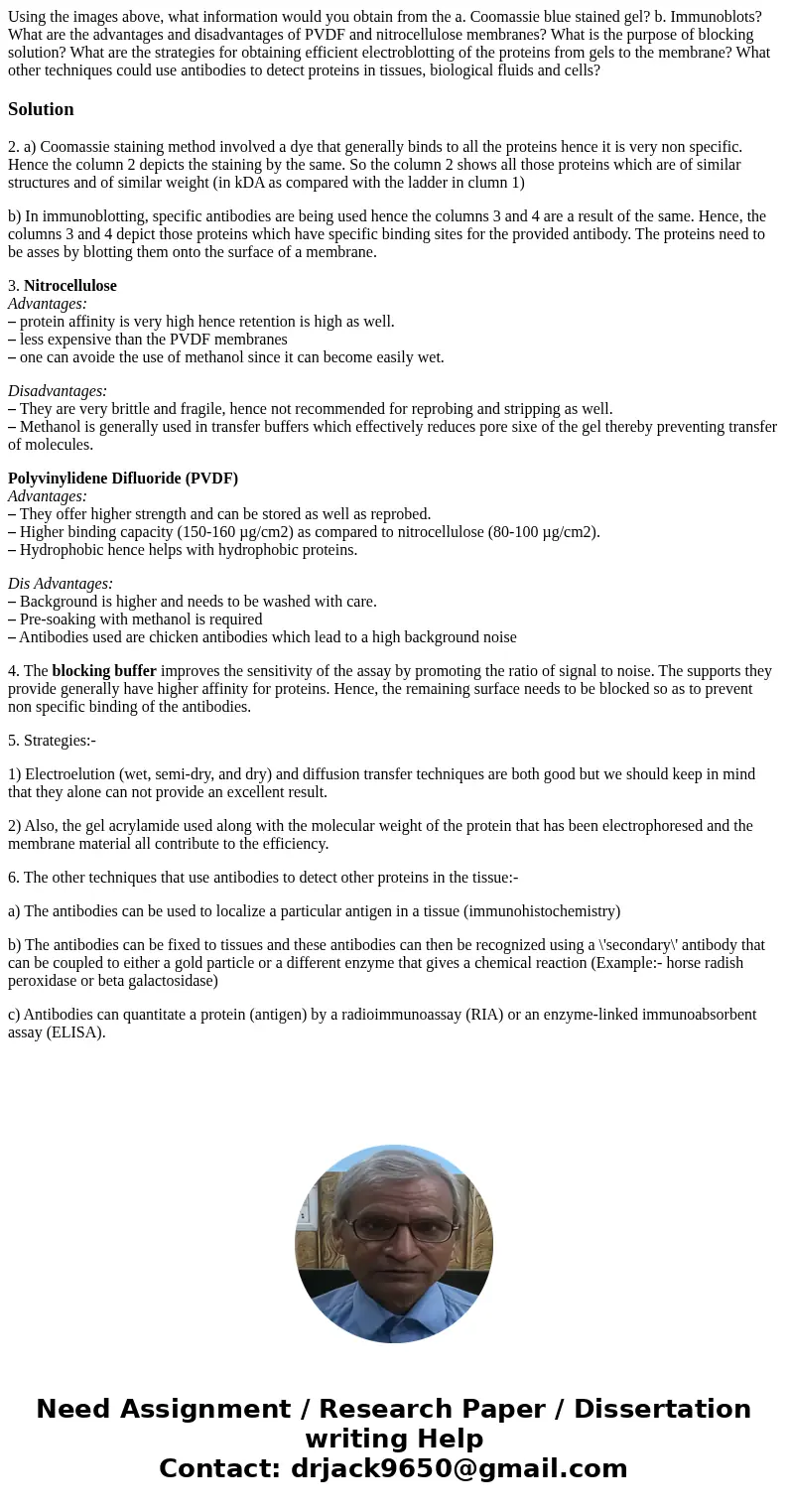Using the images above what information would you obtain fro
Solution
2. a) Coomassie staining method involved a dye that generally binds to all the proteins hence it is very non specific. Hence the column 2 depicts the staining by the same. So the column 2 shows all those proteins which are of similar structures and of similar weight (in kDA as compared with the ladder in clumn 1)
b) In immunoblotting, specific antibodies are being used hence the columns 3 and 4 are a result of the same. Hence, the columns 3 and 4 depict those proteins which have specific binding sites for the provided antibody. The proteins need to be asses by blotting them onto the surface of a membrane.
3. Nitrocellulose
Advantages:
– protein affinity is very high hence retention is high as well.
– less expensive than the PVDF membranes
– one can avoide the use of methanol since it can become easily wet.
Disadvantages:
– They are very brittle and fragile, hence not recommended for reprobing and stripping as well.
– Methanol is generally used in transfer buffers which effectively reduces pore sixe of the gel thereby preventing transfer of molecules.
Polyvinylidene Difluoride (PVDF)
Advantages:
– They offer higher strength and can be stored as well as reprobed.
– Higher binding capacity (150-160 µg/cm2) as compared to nitrocellulose (80-100 µg/cm2).
– Hydrophobic hence helps with hydrophobic proteins.
Dis Advantages:
– Background is higher and needs to be washed with care.
– Pre-soaking with methanol is required
– Antibodies used are chicken antibodies which lead to a high background noise
4. The blocking buffer improves the sensitivity of the assay by promoting the ratio of signal to noise. The supports they provide generally have higher affinity for proteins. Hence, the remaining surface needs to be blocked so as to prevent non specific binding of the antibodies.
5. Strategies:-
1) Electroelution (wet, semi-dry, and dry) and diffusion transfer techniques are both good but we should keep in mind that they alone can not provide an excellent result.
2) Also, the gel acrylamide used along with the molecular weight of the protein that has been electrophoresed and the membrane material all contribute to the efficiency.
6. The other techniques that use antibodies to detect other proteins in the tissue:-
a) The antibodies can be used to localize a particular antigen in a tissue (immunohistochemistry)
b) The antibodies can be fixed to tissues and these antibodies can then be recognized using a \'secondary\' antibody that can be coupled to either a gold particle or a different enzyme that gives a chemical reaction (Example:- horse radish peroxidase or beta galactosidase)
c) Antibodies can quantitate a protein (antigen) by a radioimmunoassay (RIA) or an enzyme-linked immunoabsorbent assay (ELISA).

 Homework Sourse
Homework Sourse